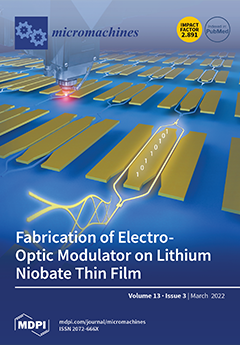A wideband antenna is proposed based on three-dimensional printing technology. The antenna was designed using the PREPERM 10 material, with permittivity
= 10, where the overall height of the proposed prototype was maintained as 12.83 mm (0.51
), having a
[...] Read more.
A wideband antenna is proposed based on three-dimensional printing technology. The antenna was designed using the PREPERM 10 material, with permittivity
= 10, where the overall height of the proposed prototype was maintained as 12.83 mm (0.51
), having a lateral dimension of 60 mm × 60 mm, at an operating frequency of 12 GHz (
= 25 mm). The proposed antenna achieved a wide frequency bandwidth with a voltage standing-wave ratio (VSWR) of less than two, from 10 GHz to 15 GHz in the Ku-band, where the maximum directivity was 20 dBi over a reflection coefficient bandwidth of 50%. It showed a miniaturized non-uniform metasurface of 2.4
× 2.4
× 0.51
that was placed at 16.5 mm (0.66
) above the ground plane, which was 2.4
× 2.4
× 0.04
in dimension. Thus, the overall height of the proposed antenna system from the feed source was 29.33 mm (1.17
). The total weight of the system including the designed structures made of PREPERM 10 and ABS with copper-painted prototypes was 96 g and 79 g, respectively. The measured results were consistent with the simulated results, demonstrating the feasibility and effectiveness of the proposed method.
Full article






